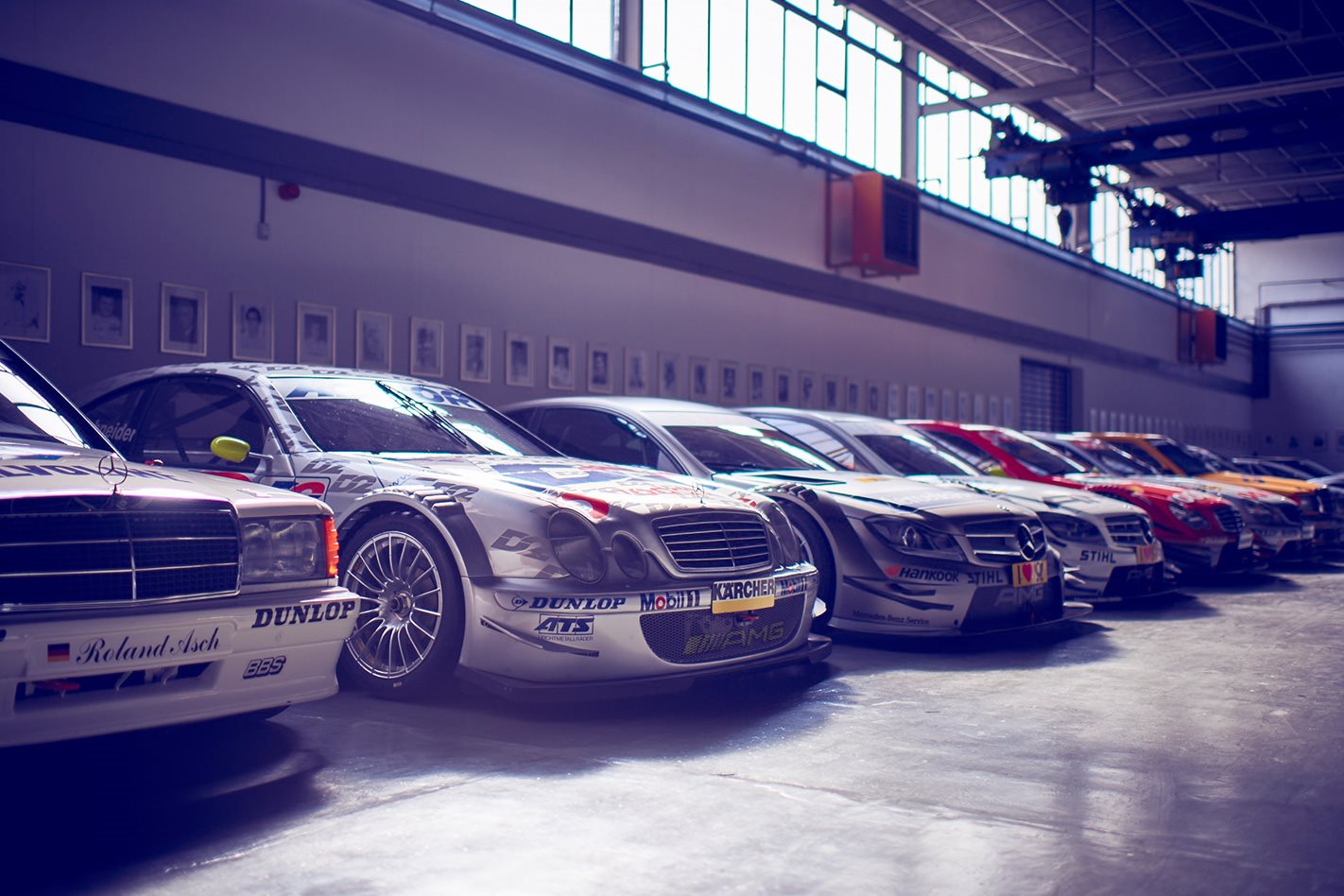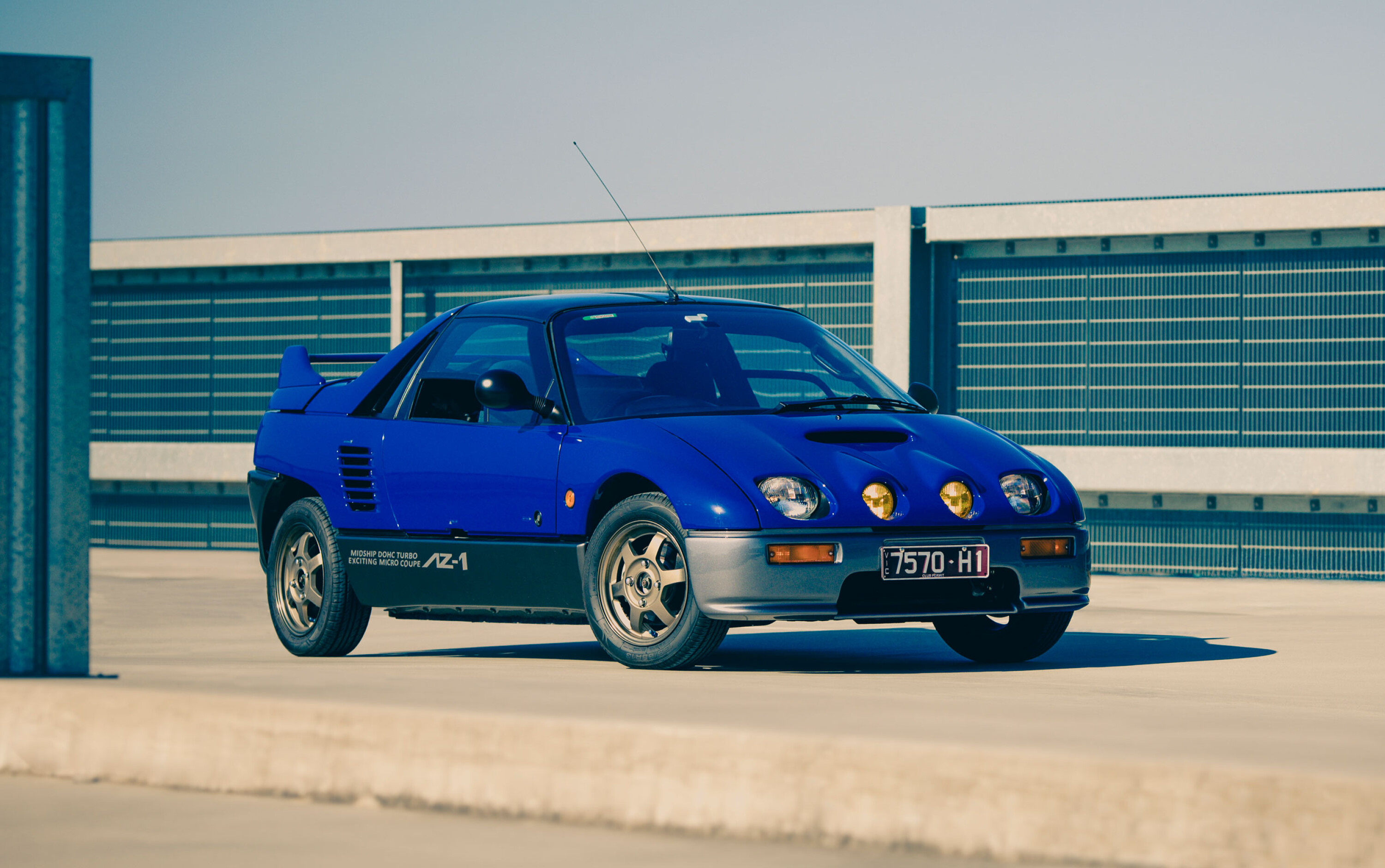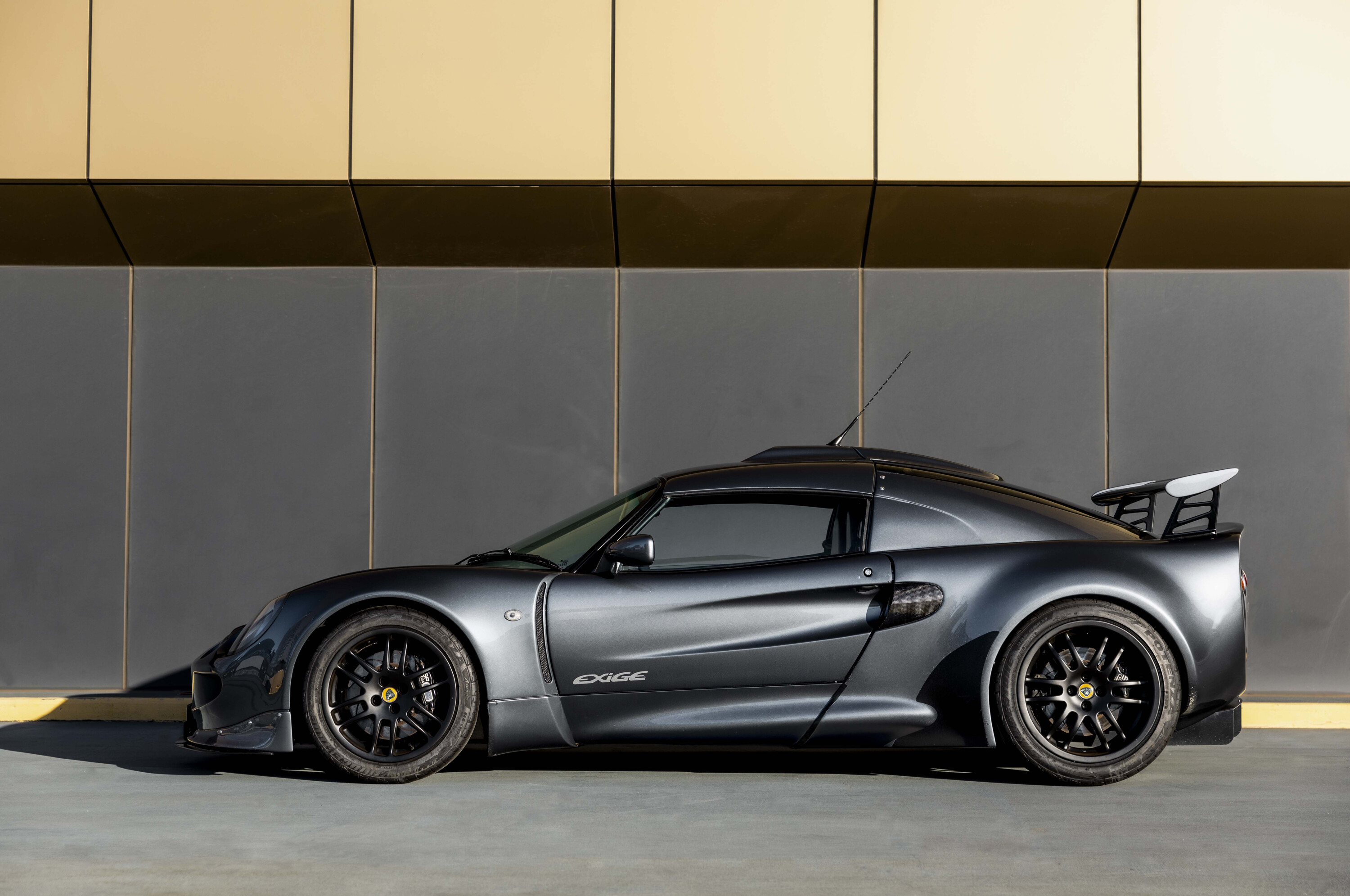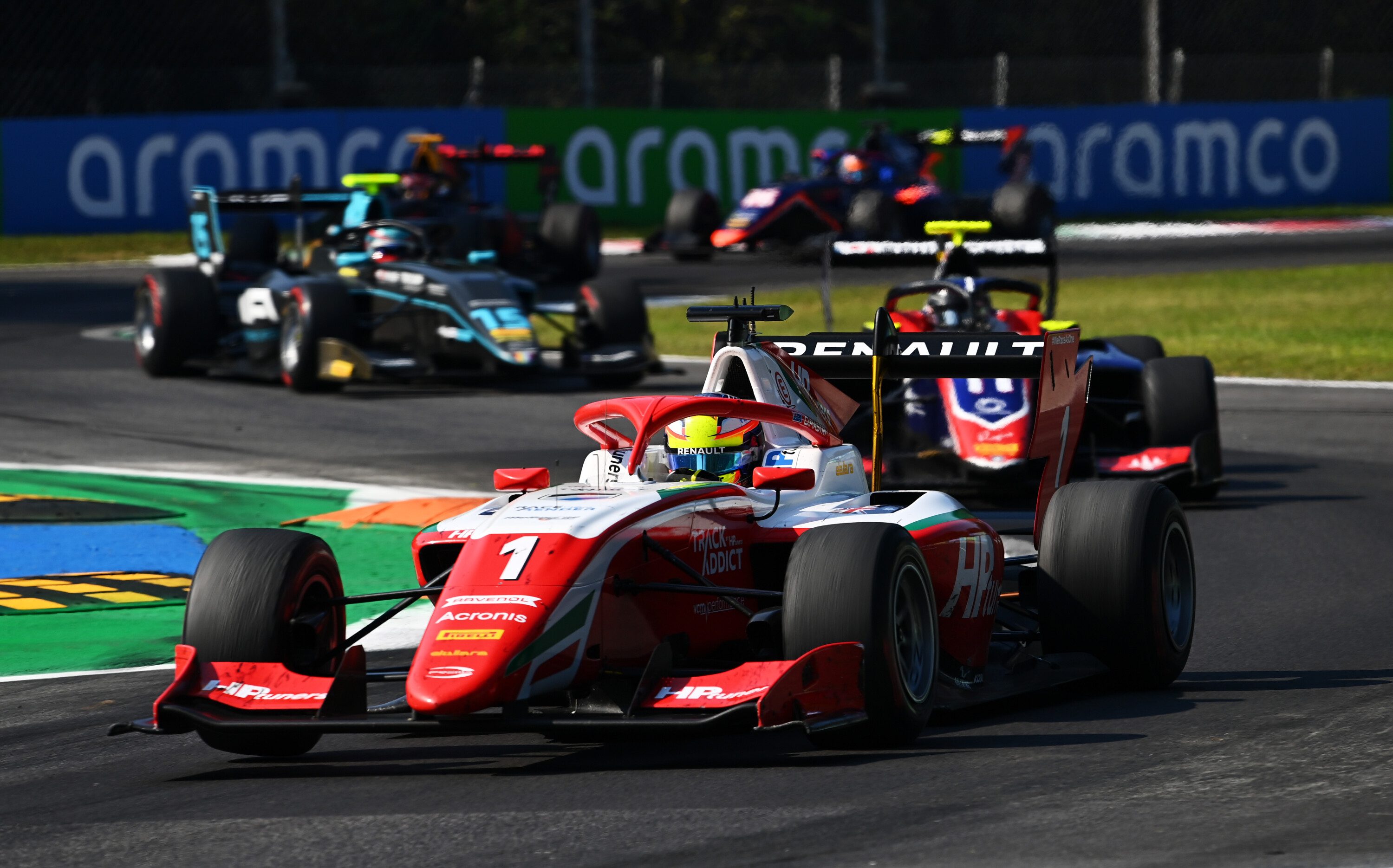A wall of F1 cars is just a small part of a 1000-strong collection of one-offs, motorsport stars and production classics hidden in secret bunkers Mercedes-Benz calls The Holy Halls.
MERCEDES’ temple to the car as a work of art is a dramatic nine-level aluminium and glass building. Designed as three overlapping circles, it houses 160 glistening cars and 1100% exhibits in 16,100% square-metres of floor space, or almost the area of the Sydney Cricket Ground.
By the time this architectural jewel opened in 2006, the museum located just outside the Unterturkheim factory gates at 100 Mercedes St, Stuttgart, cost Mercedes-Benz a cool $230 million. Worth it; since then more than seven million people (40 percent foreigners) have taken the tour through this giant atrium space with no straight walls and no closed rooms.
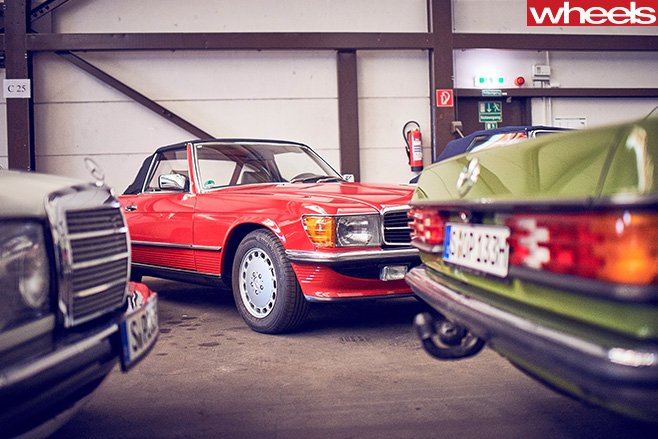
However, only seven kilometres away in Fellbach, a dreary industrial suburb of Stuttgart, is a far more fascinating, unheralded series of 11 warehouses that store an amazing collection of almost 1000 cars, everything from a three-wheel 1888 Benz to Lewis Hamilton’s 2015 championship-winning F1 car.
Mercedes calls them Heilige Hallen, the Holy Halls. They are the heart of the astonishing Mercedes-Benz Classic collection, and this visit by Wheels’ is the first time a media outlet has been allowed in with cameras.
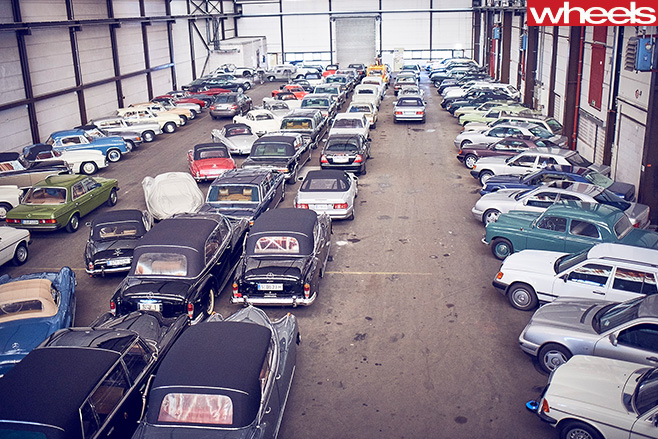

Immediately behind the showroom is the Classic Centre’s workshops, where a team of seven specialist mechanics work on maintaining the collection and especially those legendary models that are sent all over the globe, including Australia, for Old Timer events. Seventy percent of their work is for the collection and definitely not for sale, 30 percent for owners who want the best restoration and service available.
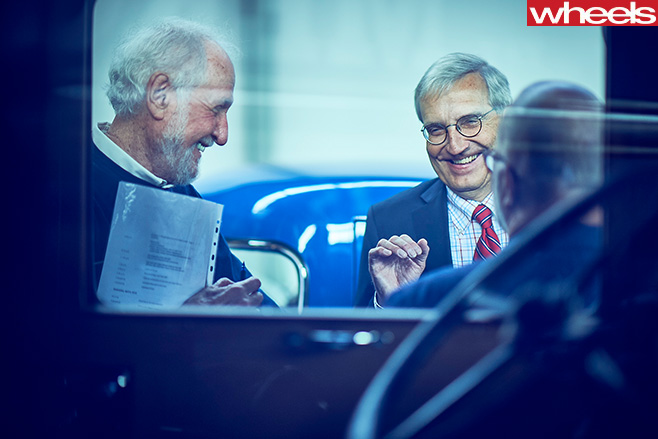
After my eyes adjust to the vast space, my brain begins to absorb the cars. A gullwing 300SL, an earlier 1952 racing SL sits on a hoist, there’s a 190E 2.3-16 Cosworth, a couple of SL Pagodas, an original SL spaceframe, a monster late 1920s SSK roadster and a ‘streamliner’ W196, Fangio’s 1954 French GP-winning car. It’s impossible not to reel in a daze, spellbound. Yet there’s much, much more to come in the Holy Halls.
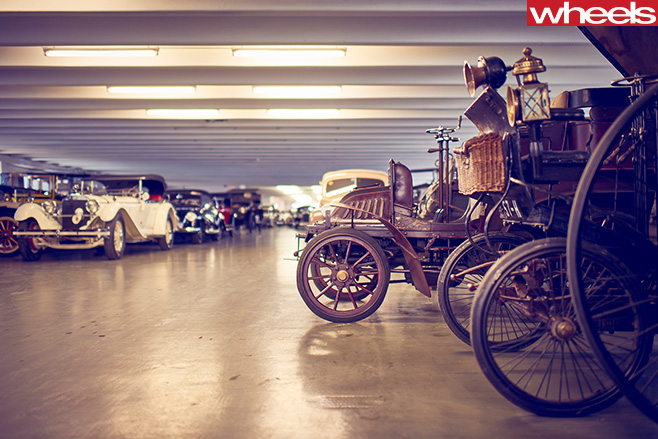
Every car is historically significant, whether it be a race winner, a record-holder, a concept, the last model of any series to come off the production line, or just a one-of-a-kind sample of rolling history. The Holy Halls are the supply chain to the museum, where cars are stored before rotating into the museum or classic car events. Some cars – especially modern F1 racers – are stored in hermetically sealed glass cases, stacked like scale-models until you get up close and see that they really are full-size.
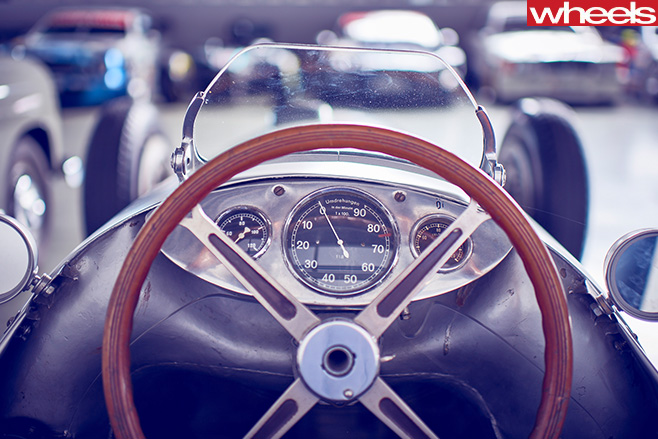
Mercedes-Benz has been saving and storing important cars for more than a century. It’s company policy to keep at least one example of every production car it has sold. Every year, Mercedes adds 30-50 cars to the collection. It is currently looking for AMG models to round out next year’s 50th anniversary AMG celebrations, ideally with an example of every significant AMG model.
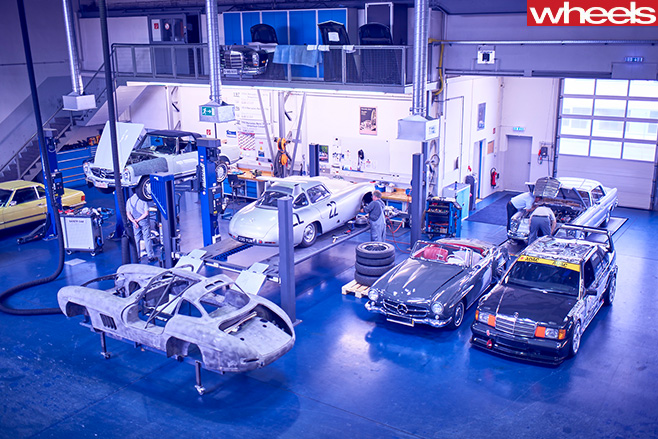
An unmarked door set in a non-descript wall opens to reveal a tiny reception area and a door to a single toilet. There is no clue to what lies beyond the other door. The low hum of air-conditioning is the only noise, though I’m told there is a clever alarm system. The vast space is hangar-like in its floor area. And filled with cars.

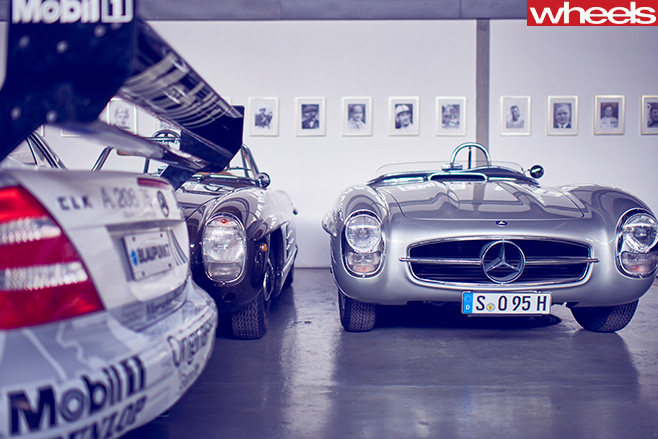
An elegant 1938 320 combination coupe-convertible has a removable hardtop, surely one of the first.
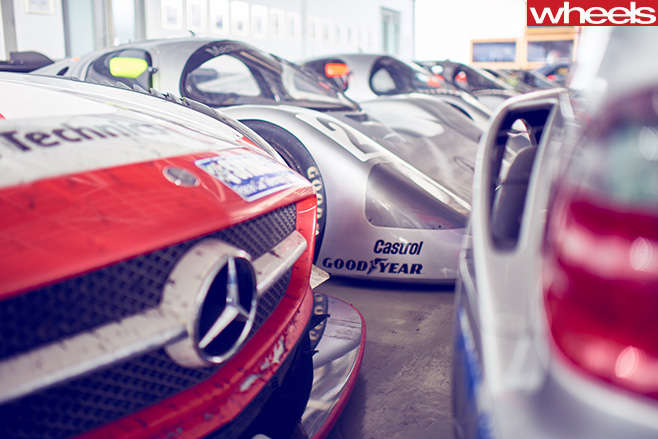
A few hundred metres away we enter a second anonymous hall, this one devoted to racing cars: DTM, Indycars, F1, rallying and sports-racers including the Group C Saubers. At one end there’s a collection of about 30 more recent F1 cars: Petronas-sponsored Silver Arrows and Mercedes-powered Vodafone McLarens, most of them stacked neatly in bespoke, clear-fronted cells. And a row of six orange C111s, the gorgeous rotary-powered gullwing coupes that almost made it to production in the early 1970s.


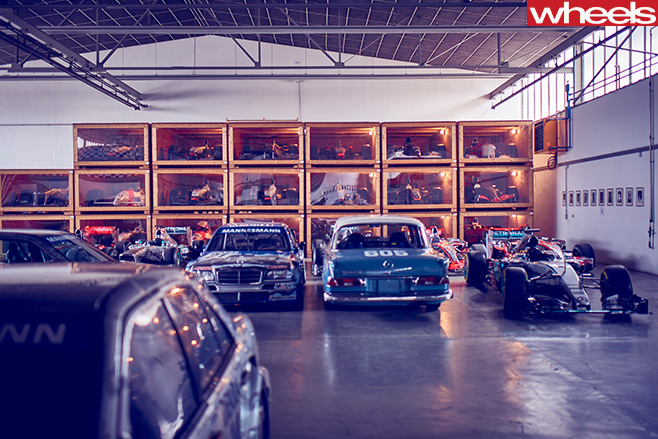
Mercedes’ commitment to the collection, and using it intelligently to promote the brand globally, is obvious. For the recent W213 E-Class international press launch in Portugal, Mercedes provided examples of nine generations of Mercedes-Benz E-Class for the journalists to drive.
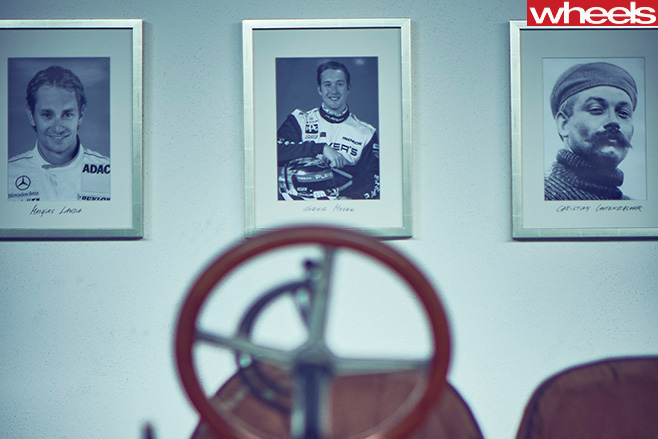
“As long as the guys above appreciate what we do, we are okay,” says Jurgen Wittmann, who manages both the museum and the collection. A couple of days later CEO Dieter Zetsche tells us he is a great fan of the collection and its global work.
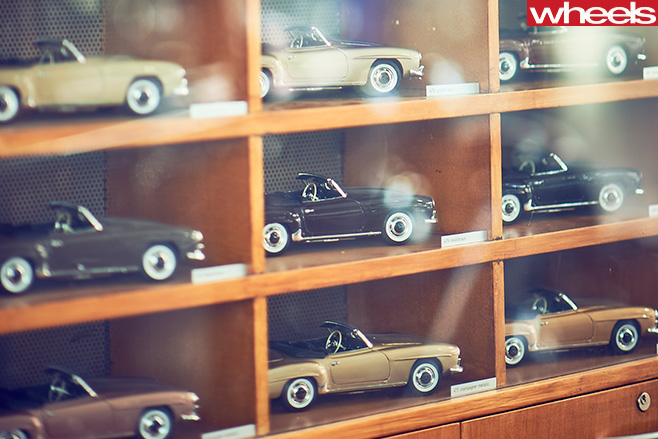
“The whole war was a nightmare,” Wittmann says. “We are aware of our history. We moved cars to various locations, mostly in the East. Some went to Polish and Czech dealers. Cars were hidden in tunnels and caves, some were sent to Dresden along with three million detailed blueprint drawings that miraculously survived unscathed.”
In 1989, after the unification of Germany, the Dresden Technical Auto Museum returned 12 cars. However, some that ended up in Russia have never been returned or even seen again.
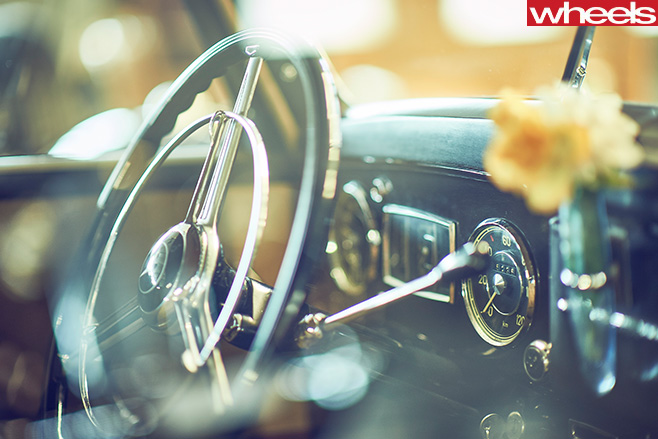
Unlike this priceless and fabulous collection, which deserves to be seen, appreciated, and admired for the treasure that it is.
No other car company celebrates its past quite like Mercedes-Benz. Maybe that’s because none have a history as long, or as lustrous, as Mercedes-Benz.

